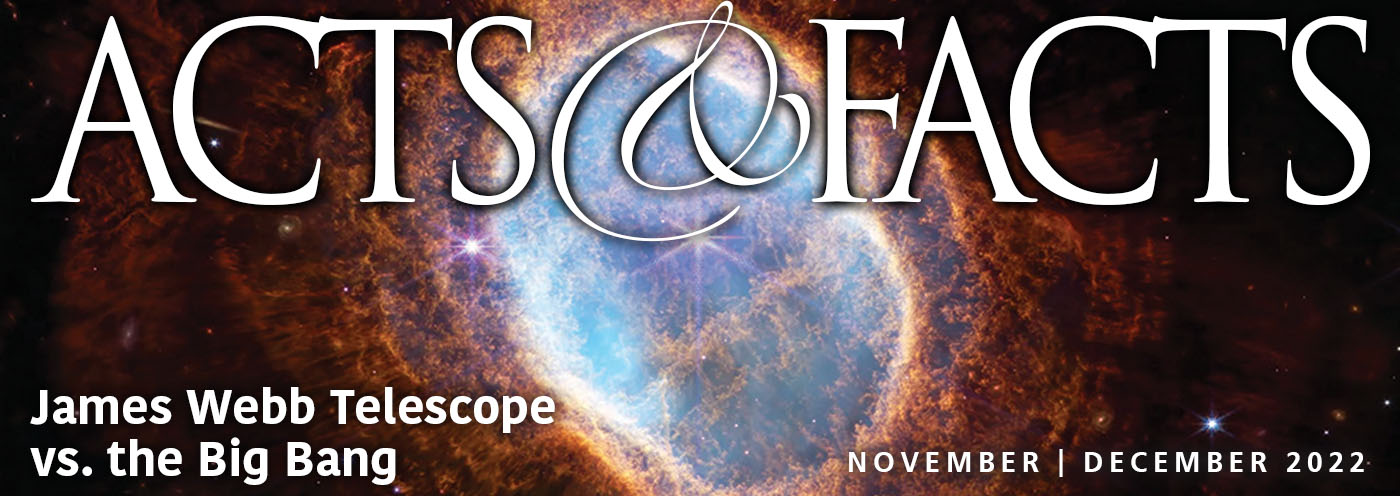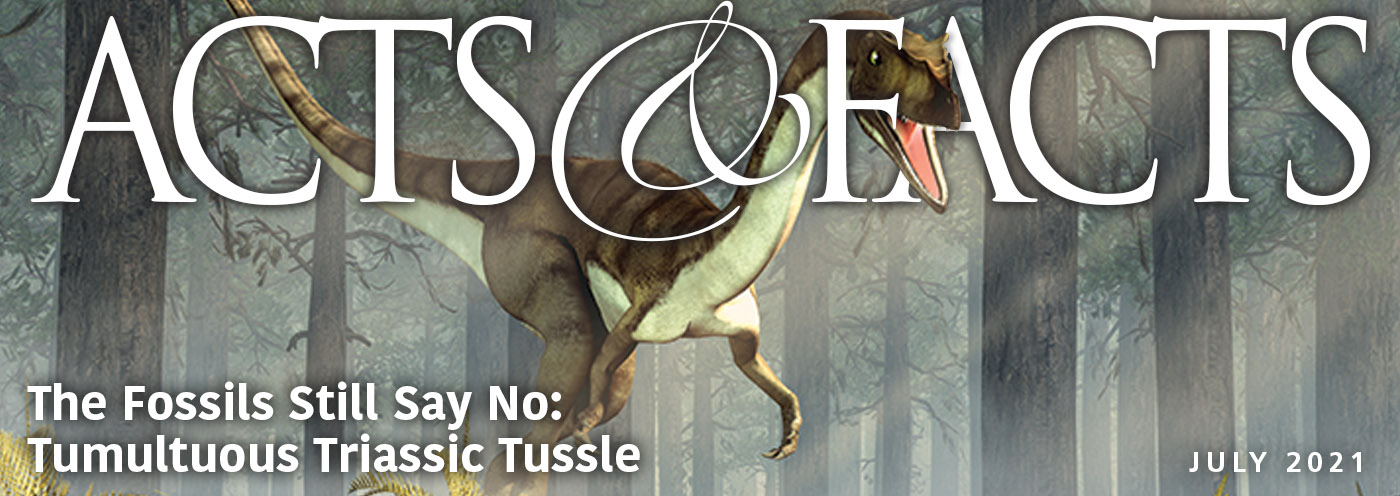Conventional geology assumes that different rock layers represent different periods of time. Paleontologists assess the age of fossilized creatures by the rock layers in which they are found. So, a fossil found in a lower rock layer is considered to have lived in a much earlier time than one found in a higher ("younger") stratum.
But frequently, fossils of the same creatures are discovered in rock layers far above or below the layers in which they were initially found. Very often, they are discovered in almost exactly the same form in both places, and they even look just like their living counterparts.1 That forces evolutionary scientists to constantly reassess the time periods assigned to fossilized life forms.
The Institute for Creation Research has reported on several fossil discoveries that have challenged conventional evolutionary timescales, including a spider web trapped in an amber deposit that was located in a rock layer supposedly 100 million years older than the time spiders were assumed to have evolved.1 And the web was just like that made by orb-weavers today.
Another example is the discovery in Japan of a fossilized tooth of what was essentially a small T. rex. Such a find would not normally make headlines, but this tooth was located in a rock layer that predated the assigned T. rex "age" by 60 million years.2
Even human artifacts--including jewelry, tools, and glue--have appeared in sedimentary layers far below the strata in which they had been previously known.3 Finds like these represent a huge upset to the evolutionary story.
In fact, one recent discovery was so out-of-step with evolution's story that the evidence was not even allowed to speak for itself. In 2009, scientists discovered amber that had been made from angiosperm--or flowering--tree resin. The problem was that according to the evolutionary timescale, it predated angiosperms by an incredible 195 million years. Clinging to their age assignments at all costs, evolutionists were forced to speculate that the amber came from an unknown tree that made the same resin as today's angiosperms, but was itself not an angiosperm!4
Two more discoveries have likewise shocked adherents of deep geologic time. A distinctly mammalian hair was found in "100 million-year-old" amber. Though a few mammal fossils had been known from nearby layers, what came as a surprise was "that the shape and structure of mammal hair has remained unchanged over a vast period of time," according to a BBC News report.5 It is as if mammals were specially created, complete with hair from the beginning.
In a separate study, the oldest fossil representation of a pelican had a beak that looked very much like pelican beaks do today. BBC News reported, "What has surprised [researchers] most about this ancient pelican is that it is almost identical to modern species."6
These are only a few of a steady stream of discoveries that continues to extend the ranges of flora and fauna throughout earth's rock layers. And each fulfills a distinct prediction of the creation model, which uses the Bible to build a historical framework. Among other tenets, creation science holds that creatures were originally made in stable, basic forms that should have remained fundamentally unchanged since the beginning.
Clearly, the fossil evidence supports this predictive tenet.
References
- Thomas, B. Amber-Trapped Spider Web Too Old for Evolution. ICR News. Posted on icr.org November 20, 2009, accessed June 15, 2010.
- Thomas, B. T-rex Cousin Evolved 60 Million Years Too Early. ICR News. Posted on icr.org September 29, 2009, accessed June 15, 2010.
- Thomas, B. Boats and Jewelry: 'Stone Age' People Were Surprisingly Modern. ICR News. Posted on icr.org January 25, 2010, accessed June 16, 2010.
- Thomas, B. Ancient Amber Discovery Contradicts Geologic Timescale. ICR News. Posted on icr.org October 19, 2009, accessed June 15, 2010.
- Walker, M. Prehistoric mammal hair found in Cretaceous amber. BBC News. Posted on bbc.co.uk June 14, 2010, accessed June 15, 2010, reporting on research published in Vullo, R. et al. 2010. Mammalian hairs in Early Cretaceous amber. Naturwissenschaften. 97 (7): 683-687.
- Walker, M. Oldest prehistoric pelican also had big beak. BBC News. Posted on bbc.co.uk June 11, 2010, accessed June 15, 2010, reporting on research published in Louchart, A., N. Tourment and J. Carrier. The earliest known pelican reveals 30 million years of evolutionary stasis in beak morphology. Journal of Ornithology, published online May 29, 2010.
* Mr. Thomas is Science Writer at the Institute for Creation Research.
Article posted on June 28, 2010.







